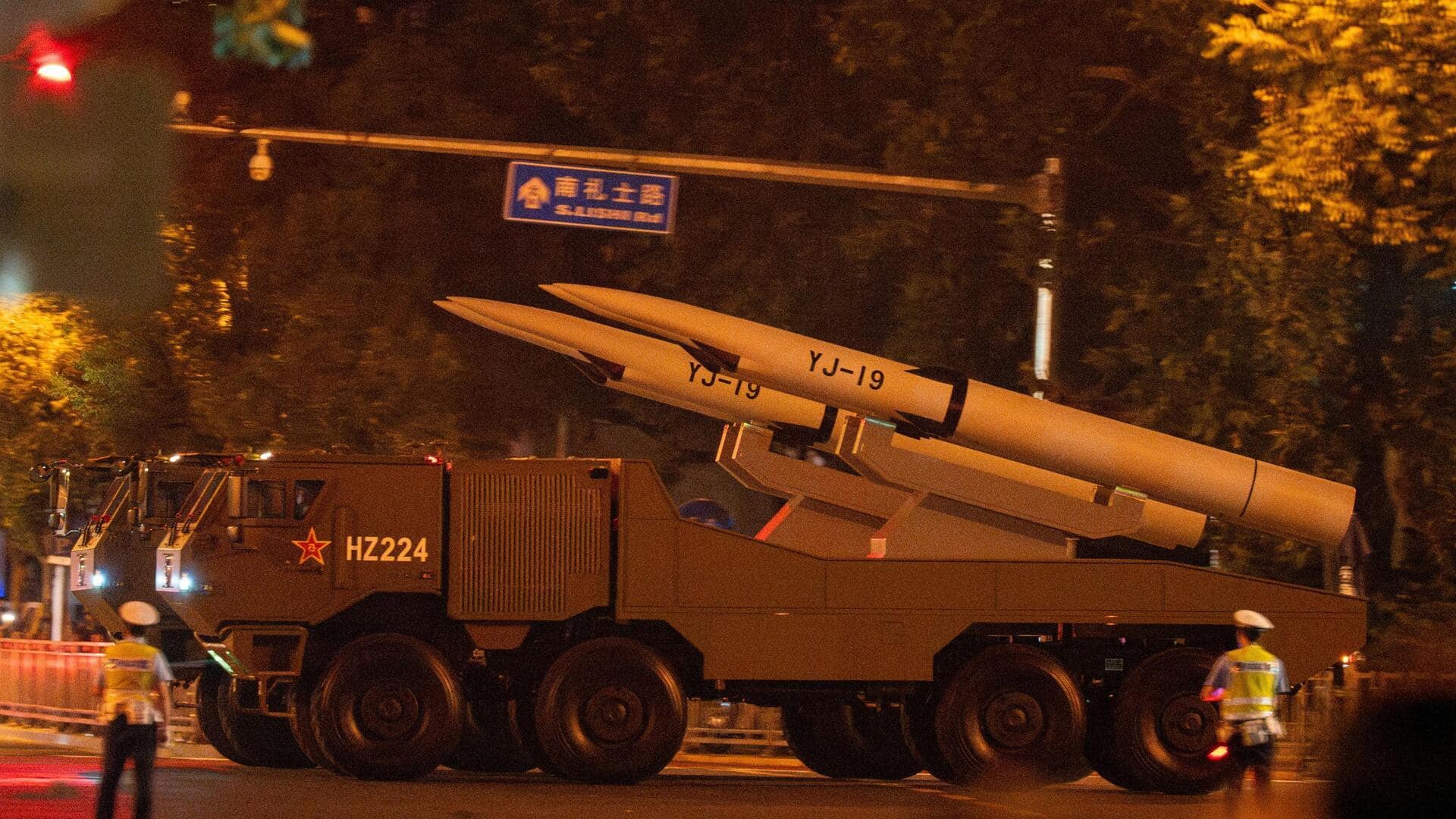
Meet YJ-19, China's 1st air-breathing hypersonic cruise missile
What's the story
China has unveiled its first air-breathing hypersonic cruise missile, the YJ-19. The missile was showcased during a recent military parade, alongside other advanced Chinese missile systems such as the YJ-15, YJ-17, and YJ-20 anti-ship missiles. The presence of these missiles at the same time highlights China's growing capabilities in integrated systematic operations. However, it is the YJ-19 that stands out due to its visible air inlet and cutting-edge aerospace technology.
Propulsion technology
The YJ-19 is believed to use a scramjet engine
The YJ-19 is believed to use a scramjet engine for sustained propulsion. This engine takes in air during high-speed flight and mixes it with fuel to generate thrust. Unlike other missiles that use rocket boosters for acceleration, the YJ-19's scramjet engine provides continuous thrust throughout its flight, making it a more advanced and efficient weapon system.
Strategic benefits
Strategic advantages of the engine
The scramjet engine of the YJ-19 offers several strategic advantages over traditional missile systems. It can change course mid-flight, making it harder for defense systems to intercept. The missile is also lighter and faster as it uses atmospheric oxygen instead of carrying an oxidizer, which gives it a longer range. However, these benefits come with their own set of challenges, such as maintaining stable fuel mixing and combustion in supersonic airflow.
Design challenges
Design challenges for the YJ-19
The design of the YJ-19 is another major challenge. Advanced heat-resistant materials and efficient thermal management systems are essential to protect the missile's nose, edges, and engine intake from temperatures exceeding 2,000 degree Celsius, that occur at speeds greater than Mach 5. This intense heat can ionize surrounding air, creating a plasma sheath that blocks radio signals in a phenomenon called "blackout," which can disrupt guidance commands.
Testing infrastructure
China's investment in advanced guidance technologies
To tackle these issues, the YJ-19 is likely to use advanced guidance technologies such as inertial and optical systems. China's continued investment in advanced fundamental science infrastructure has been key to hypersonic weapon development, which requires high-performance wind tunnels for testing. Unlike the US's reliance on computational simulations, China has several wind tunnels at its disposal including the JF-22 that can simulate flight conditions of Mach 25 to 40.